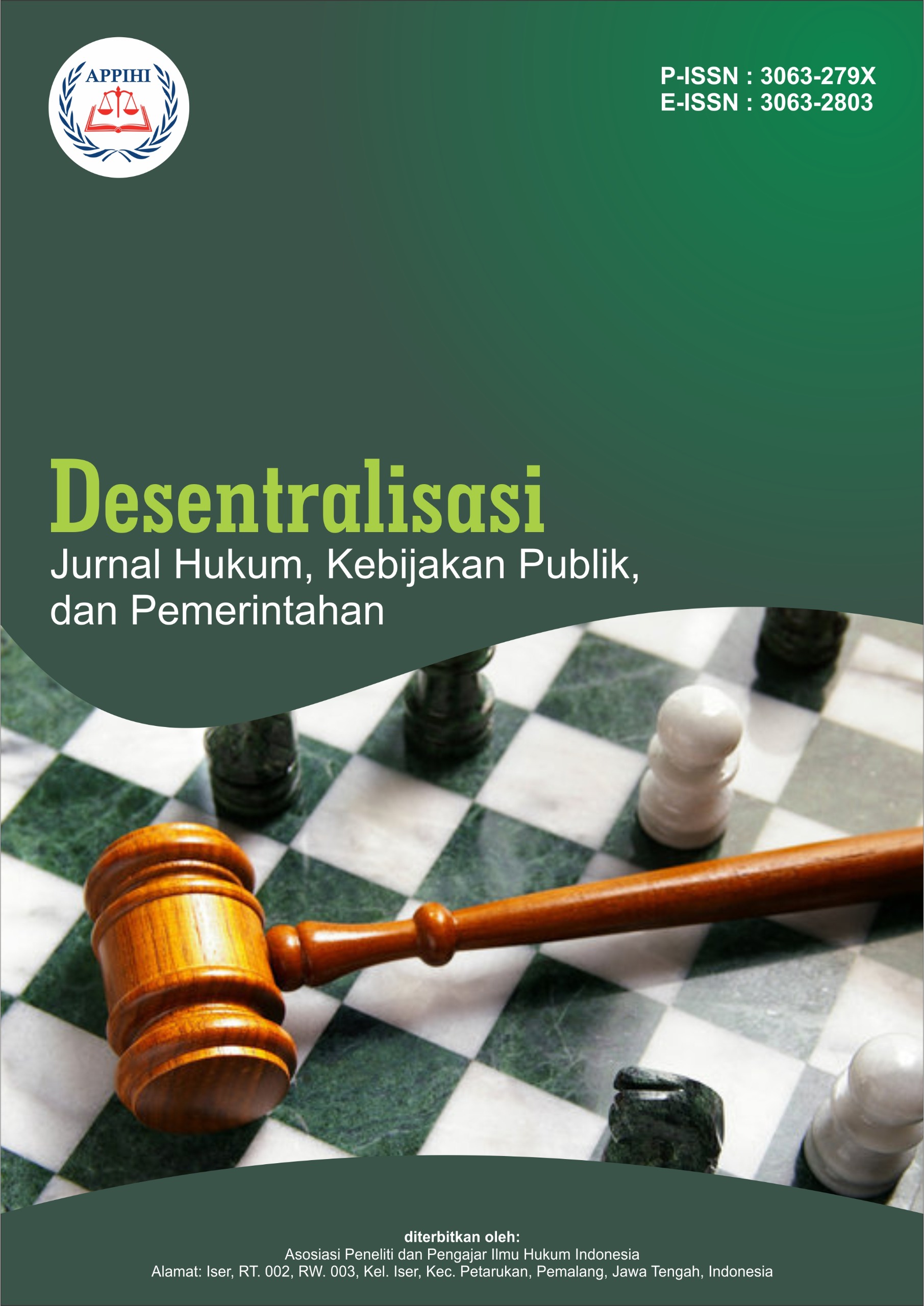Perlindungan Hukum terhadap Subjek Data Kebocoran Data oleh Badan Publik Menurut UU Nomor 27 Tahun 2022
DOI:
https://doi.org/10.62383/desentralisasi.v2i3.940Keywords:
Legal Protection, Public Body, Data Breach, Kominfo, Personal Data Protection LawAbstract
This study aims to analyze the legal protection of personal data subjects in the case of the 2024 data breach at the Temporary National Data Center (PDNS) managed by the Ministry of Communication and Informatics (Kominfo), based on Law Number 27 of 2022 on Personal Data Protection. The research employs a normative juridical method with a case study approach and statutory analysis. Legal materials are obtained from primary and secondary sources using literature research techniques. The findings reveal that Kominfo, as a public body and personal data controller, has not fully fulfilled its obligations to protect personal data as mandated by the law, as reflected in weak security systems, lack of transparency, and slow response to the breach incident. This study highlights the urgent need for the establishment of implementing regulations and an independent supervisory institution to ensure the effective protection of personal data for the public in Indonesia.
Downloads
References
Anjas Putra Pramudito. (2022). Kedudukan dan perlindungan hak atas privasi di Indonesia. Jurist Diction, (4).
Ardianto, D. (2020). Kebocoran data di Indonesia dan implikasinya terhadap privasi warga negara. Jurnal Hukum dan Teknologi, 12(3), 145–162.
Bayu Satrio, M., & Widiatno, M. W. (2020). Perlindungan hukum terhadap data pribadi dalam media elektronik (analisis kasus kebocoran data pengguna Facebook di Indonesia). Journal Civitas Academica of Law Esa Unggul University, 1(1).
Djafar, W. (2019). Hukum perlindungan data pribadi di Indonesia: Lanskap, urgensi dan kebutuhan pembaruan. Dalam Seminar Hukum dalam Era Analisis Big Data, Program Pascasarjana Fakultas Hukum UGM (Vol. 26).
Ira. (2024). Kilas balik pusat data nasional: Dibangun dengan utang, kini diserang. Katadata.co.id. https://katadata.co.id/berita/nasional/667e4993acbe1/kilas-balik-pusat-data-nasional-dibangun-dengan-utang-kini-diserang (Diakses: 27 Juni 2024, pukul 00.20)
Kusnadi, S. A., & Wijaya, A. U. (2021). Perlindungan hukum data pribadi sebagai hak privasi. Jurnal Al Wasath, 2(1).
Mamonto, D. F. (2022). Analisis perlindungan hukum terhadap penyalahgunaan data pribadi berdasarkan Undang-Undang Nomor 27 Tahun 2022. E-Journal UNSTRAT.
Mardiasmo. (2019). Perpajakan (Edisi Terbaru 2018). Penerbit Andi.
Naskah Akademik Rancangan Undang-Undang Pelindungan Data Pribadi (RUU PDP).Undang-Undang Nomor 27 Tahun 2022 tentang Perlindungan Data Pribadi.
Philipus, M. H. (2007). Perlindungan hukum bagi rakyat di Indonesia (Edisi Khusus, Cetakan Pertama). Peradaban.
Rosadi, S. D. (2022). Cyber law: Aspek data privasi menurut hukum internasional, regional dan nasional. Refika Aditama.
Rosadio, S. D. (2018). Perlindungan privasi dan data pribadi dalam era ekonomi digital di Indonesia. Fakultas Hukum Universitas Padjadjaran.
Salsabilla. (2025). Mengenal proyek pusat data nasional. Tempo.co. https://www.tempo.co/hukum/mengenal-proyek-pusat-data-nasional-1544987 (Diakses: 13 Maret 2025, pukul 13.01)
Simorangkir, A., Sihombing, H., Sihite, P. I., & Parhusip, J. (2024). Ransomware pada data PDN: Implikasi etis dan tanggung jawab profesional dalam pengelolaan keamanan siber. Jurnal Sains Student Research.
Sukman, R. D. (2024). Kebocoran data nasional sebanyak 210 instansi kena bobol. Binus University: School of Information System. https://sis.binus.ac.id/2024/11/12/kebocoran-data-nasional-sebanyak-210-instansi-kena-bobol/ (Diakses: 14 Maret 2025)
Tejomurti, K. (2025). Menanti otoritas perlindungan data pribadi.
Undang-Undang Dasar Negara Republik Indonesia Tahun 1945, Pasal 28G Ayat (1) tentang hak perlindungan pribadi.
Undang-Undang Nomor 27 Tahun 2022 tentang Perlindungan Data Pribadi.
Downloads
Published
How to Cite
Issue
Section
License
Copyright (c) 2025 Desentralisasi : Jurnal Hukum, Kebijakan Publik, dan Pemerintahan

This work is licensed under a Creative Commons Attribution-ShareAlike 4.0 International License.






